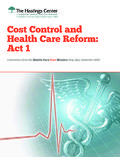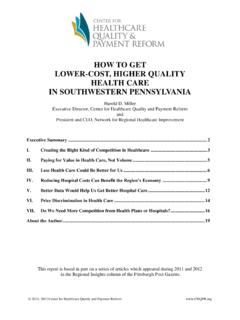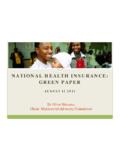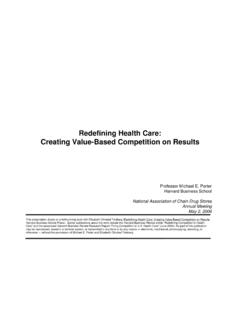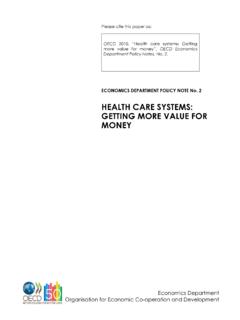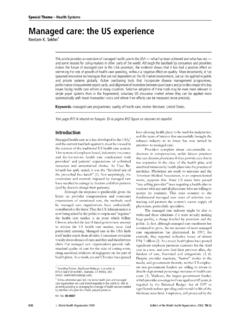Transcription of Public Service Reform - Wigan Health and Wellbeing Board
1 Delivering Public Service Reform in Wigan January 2016 Blank page Contents Foreword Start Well Perfect Week (St. George s Primary School) Children s Innovation: Adolescent Mental Health Live Well Enhanced Alcohol Pathway Working Well Live Well Complex Dependency Team Co-ordinated Community Response to Domestic Abuse Community Risk Intervention Team (CRIT) Platt Bridge Place Based Integration Age Well & Health and Social Care Integrated Neighbourhood Teams Integrated Health and Social Care: Locality Plan Hospital Discharge Enablers Workforce Reform : The Deal Spatial Planning Foreword This is the third Public Service Reform event in Wigan .
2 Our first event brought partners together to discuss opportunities for Public services in the borough to work differently together. Our second event focused on developing a shared understanding of some of the core characteristics of Public Service Reform . This third event is intended to demonstrate some of the excellent work that has been tested and implemented in Wigan over the previous few years. The rationale for a fundamental Reform of Public services remains truer than ever in the light of rising demand, and reducing budgets. Securing a transformational reduction in demand, moving from reactive and high cost services to targeted and planned spend, reducing duplication, and delivering better outcomes, is at the heart of our PSR ambition.
3 In this booklet are some examples of the work we have been doing. This is by no means a comprehensive list, but is here to demonstrate significant progress, and to exemplify some or all of the characteristics of PSR discussed at the last meeting. Start Well o Perfect Week (St. George s Primary School, Atherton) o Adolescent Mental Health Innovation Project Live Well o Enhanced Alcohol Pathway o Working Well o Live Well Complex Dependency Team o Co-ordinated community response model to Domestic Abuse o Community Risk Intervention Team (CRIT) o Place Based Integrated Working (Platt Bridge) Age Well, Integrated Health and Social Care o Integrated Neighbourhood Teams (INT s) o Locality Plan o Hospital Discharge Enablers o Workforce Reform : The Deal o Spatial Planning In the workshops today we will hear directly from those involved in these and other projects.
4 A key focal point is to discuss what needs to happen next to build on the good progress of partners in Wigan in the way Public services work together, and also to consider what needs to happen to scale this work- to move from pilots and individual projects to the mainstreaming of Reform . The strategic frameworks that guides our joint work in Wigan for example the Locality Plan for Health and care Reform , the Council 5 year strategy ( Deal for the future), our borough wide mental Health strategy, are all predicated in full or part on delivering the ambition of our PSR programme and supporting residents to be well, independent, and in control of their lives.
5 Building on this great start is our priority and we hope that you enjoy the workshop. Will Blandamer Assistant Director, Reform and Partnerships, Wigan Council START WELL Perfect Week: St. George s Primary School (Atherton) Summary A Perfect Week is a management tool that suspends the rules for a short amount of time in a department or setting in order to trial new ways of working. Building on our experience of delivering a Perfect Week in a GP setting at Boston House Medical Centre we wanted to apply this learning to an Education setting for a week in May 2015. We know that that schools are one of the only agencies who see children and families on a daily basis and are well placed to facilitate an integrated approach that, in turn, could reduce duplicate and costly interventions and improve outcomes at the earliest stages.
6 The activity that took place in Perfect Week was designed with partners, parents and the community. What s different? Close partnership working within the school and with key agencies including Gateway, children s social care, housing, leisure, CAMHS, police and fire and rescue. Using intelligence together to target specific cohorts. Reducing the number of times children, young people and their families have to tell their story by investing more time up front getting to the heart of the problem to get things right first time. Making best use of community assets and investing in local community led solutions where it is safe to do so.
7 Access to evidenced interventions, with a focus on dealing with the root cause , building resilience and reducing demand. A shared deal with the community that sets out commitments of Public services and individuals, their families and communities. Understanding whole system demand and Service use so that we can respond appropriately in a joined up way. Impact A significant amount of learning emerged from the Perfect Week and a comprehensive action plan has been developed to ensure this learning underpins the children s transformation programme. Some of the key areas are: Data and Intelligence: Schools hold a wealth of data and local knowledge and can play a key role in improving outcomes.
8 This isn t always possible as key information/ data held by services isn t shared with schools. Co-location of services : multi agency teams working on a locality footprint know the families and their needs. Developing school capacity schools can be empowered to deliver low level interventions such as early help and lower level CAMHS with the right training, information and advice. Partnership working: professionals were able to get back to their core function frontline. Wider services including housing, adult social care, Live Well, debt, Life Centres can play a key role in an integrated offer. Family centred approach/ role of key worker schools play an important role in an integrated model they see children daily!
9 Referral mechanisms, bureaucratic processes and hands offs can cause barriers and stop interventions from being timely. The cost benefit analysis of the Perfect Week was profiled across a 5 year period and indicated a potential gross fiscal saving of 1,196,918 across Public sector partners with a net fiscal saving of 995,465 Adolescent Mental Health Innovation Project Summary In Summer 2014, the Department for Education announced the creation of a 100m Innovation Programme with the aim to act as a catalyst for developing more effective ways of supporting vulnerable children. Local Authorities and / or organisations that work across social care, justice, Health and education, were given the opportunity to apply for funding from the programme.
10 Social Care and Adolescence Mental Health Project ( Wigan Council and Wigan Borough Clinical Commissioning Group) were successful in securing almost 1m in funding to resolve the rapid escalation of complex mental Health cases who become a Child Looked After. What s different? Resolve local challenges in relation to young people presenting at A&E and subsequent admittance to paediatric and general medial assessment wards. Builds an integrated assessment and care planning mechanism that can operate for Children s Social Care and CAMHS services . Uses new conversation and an asset based approach with young people and their families to gain a better insight into how to resolve the problem.
